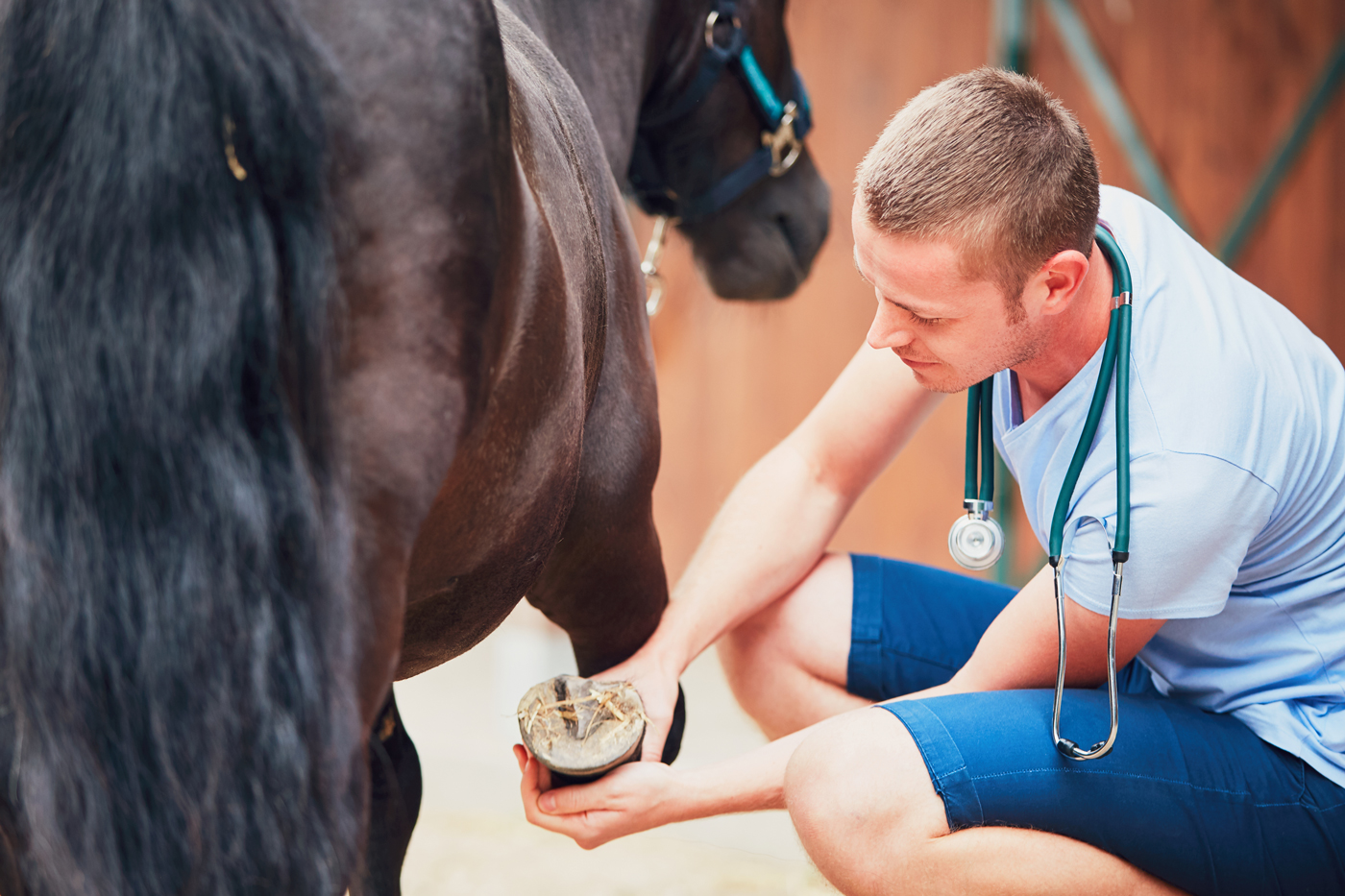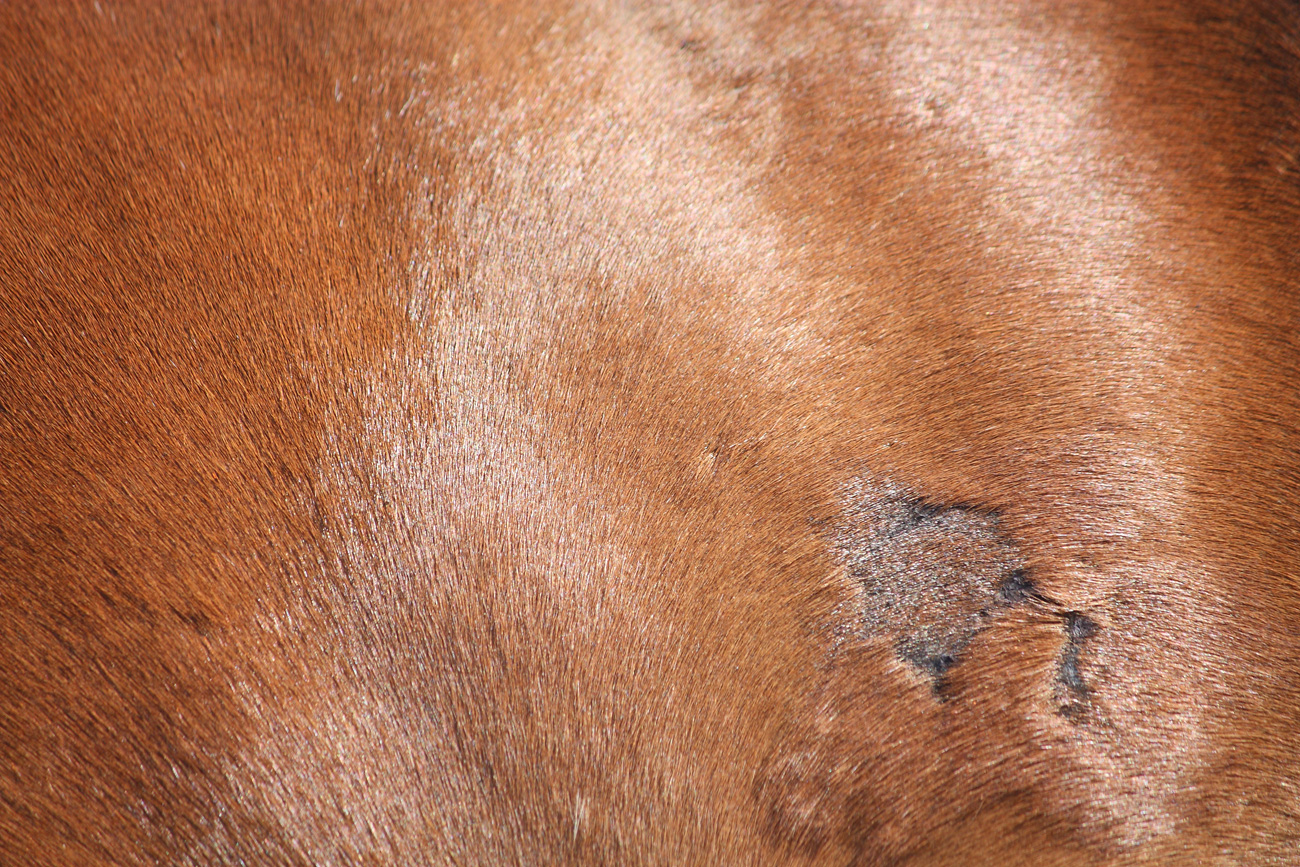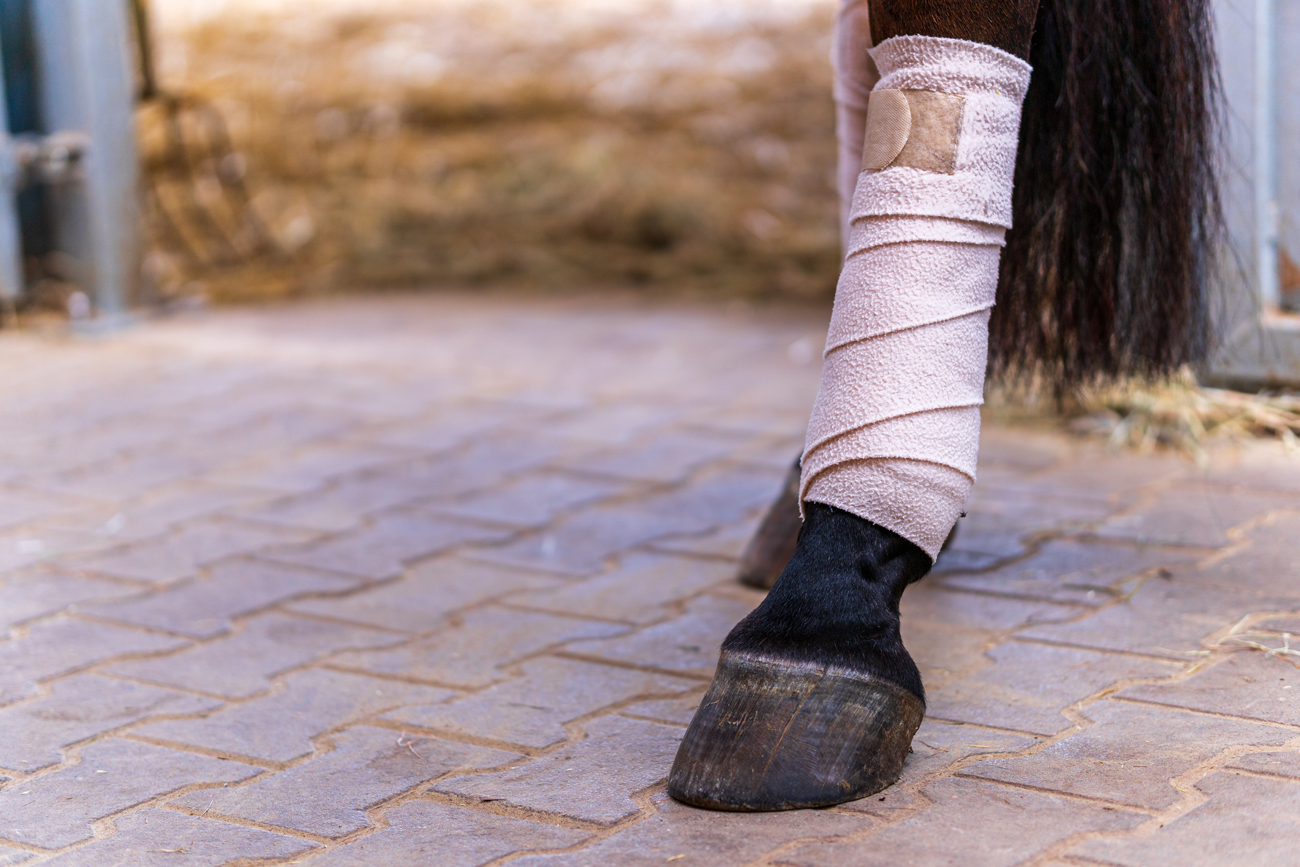We can all agree horses are incredible creatures. However, whether turned out, in their stable or out on a hack, they do seem rather prone to accidental injuries! It seems that no matter how careful you are, at some point you’ll need to attend to an emergency involving your beloved equine. From damaged ligaments to nasty cuts there’s a whole range of possible problems that you could encounter.
That’s why we’ve put together this guide to wound care in horses. You’ll no doubt reach for the phone to call your vet if a wound seems serious. But even seemingly superficial cuts and grazes need to be properly treated to prevent them becoming something more serious.
Having adequate insurance for horses in place from an early age is only one part of your horse care routine. All horses should be checked regularly for any signs of injury or illness so they can receive the care they so deserve.
Wounds - what to do first
No matter what the circumstances, when you first discover your horse has a wound it’s an upsetting experience.
We love our horses so much and put so much time and effort into their care that it’s all too easy to panic. So, take a deep breath and keep calm.
The whole point of first aid is to take early appropriate action to prevent the situation from getting worse while you wait for help.
Give your horse the best chance of recovery by keeping calm and collected. And follow these easy-to-remember steps:
- Get the horse under control and guide it to a safe place.
- If the horse is panicking or thrashing, stay at a safe distance until they calm down or professional help arrives.
- Quickly assess the severity of the injury and your horse’s condition. Try to see what caused the wound – this is important when it comes to assessing treatment.
- Call your vet as soon as possible and give them as detailed a description of the situation as you can. Follow their advice.
- Horses can sometimes become entangled when injured. If possible, untangle them so they don’t struggle to break free and end up causing further injury.
- Never endanger yourself in the process. You can’t help your horse if you get injured, too.

When to seek help
Owing to their spirited nature, it’s fairly common for horses to suffer cuts and grazes throughout their lives. But depending on the type of wound, the cause of it, and its location there are a whole range of first aid treatments available.
There are some important things to watch out for when assessing whether it’s a potentially life-threatening injury that requires emergency help. Call your vet immediately if:
- There is heavy bleeding. Gushing or spurting blood should be treated immediately. Control heavy bleeding by pressing directly on the wound. But be careful not to push any foreign object further into the wound. While sterile gauze pads are best, clean leg wraps, towels, a handkerchief or even your hand will do. Keep the pressure on until the bleeding stops or help arrives.
- The injury is in the eyes or jaw.
- There’s a clear, yellowish fluid oozing from a deep cut or puncture near a joint or tendon.
- The injury is more than skin deep or more than a few centimetres long.
- The wound is very dirty or difficult to assess.
- It was caused by an animal bite.
- The horse is suffering lameness or there’s deformation of the affected area.
- Internal injury is suspected.
- There’s an object embedded in the wound.
- The horse is showing signs of shock. These include irregular breathing, a shallow pulse, an unfocused look, and cold ears and feet. If you suspect shock then don’t attempt to move them or apply first aid. Instead cover them with a light blanket and wait for help.
- The horse hasn’t been vaccinated against tetanus.
- You’re in any doubt or you lack the experience to appropriately assess or treat the wound.
In most cases other than very minor cuts it’s still usually best to call your vet for advice.
Types of wounds
When assessing wounds and giving information to your vet it’s important to be aware of the different types of wounds horses suffer.
Incised or clean-cut
The edges of these wounds are clean, straight and caused by something very sharp. These wounds can cause a lot of bleeding and are often deeper than they appear at first.
Lacerated or torn
With irregular and jagged edges these may be caused by a sharp object or by impact with something hard and blunt. Often these aren’t as deep or as bloody as clean-cut wounds. Due to the impact trauma, there may be swelling of the surrounding area.
Puncture
Often caused by nails or large thorns piercing the skin. The puncture wound can often appear quite small on the surface, but will penetrate far deeper into the flesh.
Unfortunately, they are all too easy to overlook but can pose a considerable risk of infection. Knowing how to deal with a nail in your horse’s hoof is just one of the essential bits of knowledge any horse owner needs to read up on.
You should also have horse insurance in place to help protect you from the financial costs of emergency treatment.
Grazes or abrasions
These wounds might, at first, seem superficial and nothing to worry about. In fact, because they tend to have a larger surface area than other wounds, they can take a while to heal and can often pose a greater risk of infection.
It’s important to treat this appropriately at first and then keep an eye on them in case of further complications. There is also often associated bruising.
Even in the absence of an obvious wound if you notice bruising, lumps, swellings or inflammation then it could be worth contacting your vet in case there’s an underlying injury.
By having adequate horse insurance and acting sooner rather than later you’ll make sure small problems don’t become big ones.

First aid treatment for wounds
If the wound doesn’t appear to be an emergency, then apply first aid yourself. Follow our handy step-by-step guide:
- Wash and dry your hands and wear disposable gloves if possible. You want to minimise the risk of infection.
- Use running water to carefully rinse out any foreign material such as dirt, splinters or gravel. These can all introduce bacteria to the wound and cause it to become infected. While tap water is fine for this, saline solution is better as it doesn’t sting so much. Also, only apply the minimum amount of pressure to rinse the wound surface. Excessive force can aggravate or cause further injury.
- If there are any large objects embedded in the wound then leave these for your vet to remove. However, if you must remove them then keep any larger objects, particularly if they’re from a puncture wound. Complications may arise later and it would be useful for your vet to see what caused the injury. For example, there could still be parts of it embedded deep in the wound.
- Gently wipe the wound with gauze squares soaked in saline solution or tap water. Don’t use antiseptic as this may damage the skin. Throw away each square as it becomes soiled with dirt and blood. Continue wiping until the gauze square remains clean of visible dirt and only stained by a little fresh blood. Take your time with this – a clean wound now will lead to better results further down the line.
- Gently pat the area dry using a clean towel or pad of tissues. Don’t use something that might leave strands of material stuck to the wound.
- If the wound is obviously superficial then you could apply an antibiotic paste or other ointment to help prevent infection. You might need to reapply the medication daily or more frequently for a few days. Deep or contaminated wounds must be seen by a vet as the horse might require stronger antibiotics to fight off any potential infection.
- If necessary, apply a sterile dressing and bandage. Most minor cuts and abrasions don’t need bandaging. However, depending on the location and depth of the wound a bandage might be advisable.
Whatever treatment you follow try to avoid any needless fiddling. Constant application of ointments or moving of dressings can often lengthen a horse’s natural healing process.
To bandage, or not to bandage?
Wounds above the elbow and stifle are usually left unbandaged as they tend to heal well enough on their own. However, those below the knees or hocks tend to need protecting from dirt and further knocks. So, bandages are often advised.
In terms of depth, shallow, superficial wounds can be left uncovered. However, a ‘full-thickness’ wound (one that penetrates all skin layers so that the edges separate or can be pulled apart) can become infected if left unbandaged.
If you do decide to use a bandage on a wound, then follow this straightforward three-step procedure:
- Place a clean, non-stick dressing over the entire wound.
- For padding, wrap a soft, absorbent padding material around the wound. Roll cotton and sheet cotton are great, as are quilted wraps.
- Secure by wrapping a wide, elastic veterinary bandage around the wound to hold the dressing and padding in place. Don’t wrap it so tight it interferes with blood flow. But not so loose as it may slip or become undone.
Horse Journals magazine has an invaluable guide to bandaging a horse.

Signs your horse’s wound is infected
It’s important to keep a close watch on any horse’s wound. While most wounds heal without complications after only routine cleaning, infections can occur. When inspecting your horse’s wound ask yourself the following questions.
- Does it feel hot to the touch? Use your hands to gently feel the wound and the surrounding area for any signs of excessive warmth. This can be difficult to discern, so you might want to compare it to elsewhere on your horse.
- Is the wound swollen? Initial swelling following an injury is to be expected and usually goes away over a few days. However, if the swelling gets worse, or goes away and then returns, the wound might have become infected.
- Does the wound smell? Perhaps the most obvious sign of an infected wound is the smell of dead tissue. There’s no mistaking it.
- Does the skin around the wound look red? Particularly if your horse is pale skinned then this can be an important indicator of infection. If your horse is darker skinned then this can be more difficult to notice.
- What colour is the wound discharge? Normal wound discharge is clear or creamy. Green or yellow discharge indicates that an infection is taking hold.
- Is the wound tender? Obviously, a new wound is likely to be sore. But if your horse’s wound seems more sensitive to the touch than it was previously. Or the tenderness has spread to the surrounding area, then an infection could be at work. Be very gentle when doing this.
After a couple of weeks, look carefully to see if you can spot any proud flesh. This is a pink mass of granulation tissue that bulges from the wound so newly formed skin can’t grow over it. This delays or halts healing and you’ll need to speak to your vet about possible treatment.
Horse insurance through Equesure
Whatever your first aid emergency, Equesure’s team of insurance specialists have over 60 years of combined equestrian knowledge to help tailor a bespoke plan suited to your horse’s needs and most budgets.
Features and benefits of horse insurance can include:
- Vet’s fees cover up to £4,500 per incident but with unlimited number of claims within the policy year.
- Personal dental cover available on some policies up to £1,750 if required.
- An additional discount for insuring more than one horse.
- Saddlery and tack cover available.
- Horseboarding cover available.
- Personal accident cover up to £20,000.
- Public liability cover up to £5 million.
- Loss of use cover available with all insurers.
- EU cover/usage available.
- Cover for death, theft or straying of horse.
Call our team today to discuss your requirements and get a quick quote for horse insurance.






